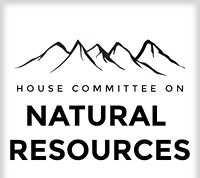EPA WATERS Award Lauds Innovative and Effective Regional Drinking Water Improvements
WASHINGTON – (RealEstateRama) — The U.S. Environmental Protection Agency Region 10 recently honored four Pacific Northwest communities for excellence in providing safe drinking water to the public by using the Drinking Water State Revolving Fund program. The communities of Stevens County (Mission Ridge), WA, and Ashland, Baker City and Garibaldi, OR received this recognition after being nominated by their respective states.

The WATERS awards program was initiated in 2016 by EPA Region 10 to acknowledge outstanding projects and to share information with other communities about ways to utilize funding from the Drinking Water State Revolving Fund to help water systems maintain or return to compliance with the Safe Drinking Water Act. In addition, their projects met one or more elements of the WATERS acronym, which are:
- Well-planned
- Affordable
- Transferable
- Efficient
- Resilient
- Sustainable
“Rebuilding America’s infrastructure is a critical pillar of the President’s agenda,” said EPA Administrator Scott Pruitt. “The state revolving fund program not only helps achieve that goal but also ensures safe and clean water and environmental protection for these communities.”
The award winners were selected in 2016, then the actual awards were presented as opportunities arose in April and May 2017. Here is a description of the winning projects:
City of Ashland, Loop Road Reservoir, Pump Station Improvements, and TAP Intertie Project
The City of Ashland, Oregon now provides a dependable and more resilient supply of clean and safe drinking water throughout the year to the more than 21,000 residents. In 2012, the City of Ashland’s 2012 identified inadequate storage, inefficient pumping and piping, and high risk to the single supply source during emergency conditions. For six months of every year, the sole potable water source is live flows from Ashland Creek. With a $3.5 million DWSRF loan, the City of Ashland constructed an intertie pipe connecting the nearby Oregon communities of Talent and Phoenix to provide emergency backup supply during water treatment plant outages. Additional efficiency improvements include premium efficiency motors, variable frequency drives, and elimination of continuous pumping, pervious paving, and xeriscaping. The project was made more affordable due to principal forgiveness in the amount of $950,000.
Stevens County PUD, Mission Ridge Water System Arsenic Remediation Project
The Mission Ridge, Washington water system is a small, rural system that serves a population of approximately 100 people and is owned and operated by Stevens Public Utility District. The system had four sources; three with minimal output and one with high levels of arsenic. After exploring many options to reduce arsenic, Stevens PUD decided to obtain water from the nearby Kettle Falls system by installing a 5,000 foot intertie pipe. Part of the proposed pipe route contained culturally sensitive areas, so involved parties, including Stevens PUD, Washington Department of Health, Department of Archaeology and Historic Preservation, and the Colville Tribe worked together to use a non-traditional pipe installation. Mission Ridge received a DWSRF loan of $319,000 with 30% principal forgiveness to pay for this project.
City of Garibaldi, Garibaldi & Watseco-Barview Waterline Intertie Project
Approximately 925 residents and thousands of seasonal fishers on the Oregon coast utilize drinking water from the Garibaldi and Watseco-Barview Water Districts. Watseco-Barview was working with the Oregon Health Authority to reduce total trihalomethanes (TTHM) to safe levels in drinking water by the end of 2014. A DWSRF loan in the amount of $1.86 million, half of which will be forgiven, paid for the City of Garibaldi to install an intertie extending Garibaldi’s public water supply line to the two neighboring communities. The terms of the loan made the project significantly more affordable to the approximately 925 residents served by the consolidation project. In addition, the community of Garibaldi developed a video documenting project construction, including the many innovative solutions used to finish on time and under budget.
Baker City, Ultraviolet Water Treatment Plant Project
In August 2013, a waterborne disease outbreak of Cryptosporidium prompted the Oregon community of Baker City to move quickly to install UV treatment. The water system, which serves just shy of 10,000 residents, was already working on a plan to improve water quality compliance by the fall of 2016, but the cryptosporidium outbreak, which sickened hundreds, brought swift action. Temporary UV treatment was installed, and subsequently installation of a permanent UV treatment system was completed as of May 2015. The City Council selected UV treatment as the low cost alternative, preferred option to supplement the existing chlorine disinfection. Innovative construction management proved an efficient way to construct the treatment system and build and install the UV reactors, electrical panels, a lab and required piping for the reactors. A DWSRF loan for $2 million was used to help pay for the project, and $250,000 of that amount was offered as principal forgiveness.
The Drinking Water State Revolving Loan Fund was established by the 1996 amendments to the Safe Drinking Water Act. It is a financial assistance program to help water systems and states to achieve the health protection objectives of the Safe Drinking Water Act.
Congress appropriates funding for the DWSRF. EPA then awards capitalization grants to each state based upon the results of the most recent Drinking Water Infrastructure Needs Survey and Assessment. The state provides a 20 percent match.
Since 1997, the Region 10 DWSRF program has been capitalized at a total of $1.1 billion. To date, using those funds, along with state match, repayments and interest earnings, Region 10 states have provided $1.7 billion worth of loans.
Nationally, since the DWSRF program’s beginning there has been a federal investment of over $19.1 billion, which due to the revolving nature of this program, has provided more than $32.5 billion to water systems through 2016. More than 12,800 assistance agreements have helped local communities:
- improve drinking water treatment
- fix leaky or old distribution pipes
- improve water supply sources
- replace or construct finished water storage tanks
- other infrastructure projects needed to protect public health
States are responsible for implementing their DWSRF programs. They rank the project applications they receive from water systems and produce a Project Priority List. States have flexibility to tailor their ranking process while meeting the SDWA requirement to give priority to projects that:
- Address the most serious risks to human health
- Are necessary to ensure compliance with the SDWA
- Assist systems most in need according to state affordability criteria
- States may customize loan terms to meet the needs of small and disadvantaged communities or to provide incentives for certain types of projects.
- The Drinking Water State Revolving Fund is the basis for a revolving fund that provides loans and other authorized assistance to water systems for eligible infrastructure projects.
As water systems repay their loans, the repayments and interest flow back into the dedicated revolving fund which may be used to make additional loans and provide clean drinking water for additional communities.
More information about the DWSRF is available at: https://www.epa.gov/drinkingwatersrf
To find out more about the award winning projects In Oregon and Washington: https://www.epa.gov/or/region-10-drinking-water-state-revolving-fund-waters-awards
##
Contact Us to ask a question, provide feedback, or report a problem.
Contact Information:
Judy Smith ()
503-326-6994
Jeff Philip ()
206-553-1465




